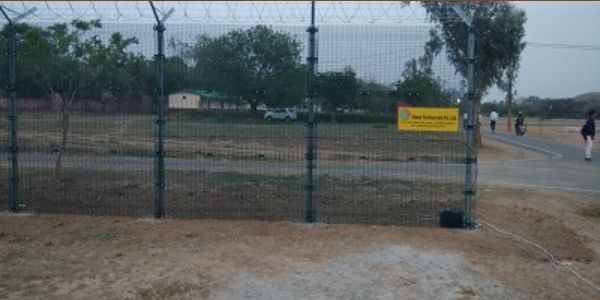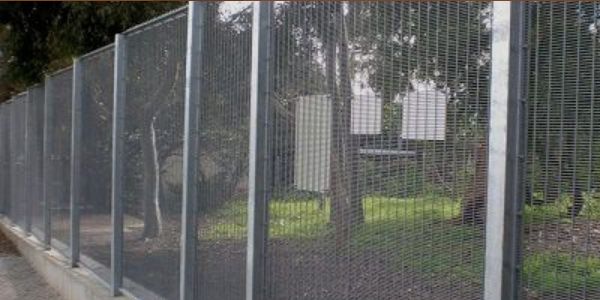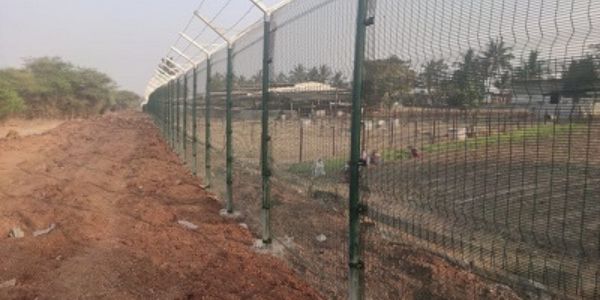



Anti Climb Fencing: Safeguarding Your Premises with Advanced Security Solutions #
Introduction
When it comes to safeguarding your property and ensuring public safety, security fencing plays a crucial role. Among various security fencing options available today, Anti Climb Fencing has emerged as an effective and reliable solution for deterring intruders and providing robust perimeter protection. In this article, we will explore the features, benefits, applications, and considerations related to Anti Climb Fencing, guiding you in making informed decisions about your security needs.
The Importance of Secure Perimeters
Secure perimeters are the first line of defense against un authorized access and potential threats. Whether it’s a commercial property or a public facility, having a strong and secure perimeter ensures that your assets and people remain protected. Anti Climb Fencing serves as a proactive measure to prevent intrusions and acts as a visual deterrent to potential wrongdoers.
Characteristics of Anti Climb Fencing
Anti Climb Fencing is designed to be difficult to scale or tamper with due to its unique construction. Typically made from high-quality steel, the fencing features narrow gaps and smooth surfaces, making it challenging for intruders to find footholds or handholds for climbing. The height and material options can vary to suit different security requirements.
Types of Anti Climb Fencing
- Welded Mesh Fencing: This type of fencing consists of welded wire mesh panels that are difficult to cut or penetrate, offering an excellent balance of security and visibility.
- High-Security Palisade Fencing: Palisade fencing is characterized by its sharp-pointed tops, making it extremely difficult and dangerous for intruders to climb over.
- Razor Wire Fencing: Adding an extra layer of security, razor wire fencing features sharp-edged wires that deter even the most determined intruders.
Advantages of Anti Climb Fencing
One of the main advantages of Anti Climb Fencing is its formidable deterrence against potential intruders. The design and structure make it challenging to breach, discouraging trespassers from attempting to climb or cut through the fence. This enhances the overall security of your premises and reduces the risk of unauthorized access.
Choosing the Right Anti Climb Fencing
Selecting the appropriate Anti Climb Fencing for your property requires careful consideration. Assess your specific security needs, including the property’s location, surroundings, and potential threats. Moreover, ensure that the chosen fencing complies with local regulations and security standards.
Installation and Maintenance
To maximize the effectiveness of Anti Climb Fencing, professional installation is crucial. Skilled installers can ensure that the fence is correctly erected and that all security features are integrated seamlessly. Additionally, regular maintenance and inspections are necessary to identify any vulnerabilities or wear and tear that might compromise the fence’s integrity.
Applications of Anti Climb Fencing
Anti Climb Fencing finds application in various settings, including:
- Securing Commercial Properties: Retail stores, warehouses, and industrial facilities benefit from the added security that Anti Climb Fencing provides.
- Protecting Critical Infrastructure: Sensitive sites such as power plants and data centers rely on Anti Climb Fencing to prevent potential threats.
- Usage in Public Areas: Public parks, schools, and government buildings use Anti Climb Fencing to ensure safety and protection.
Comparing Anti Climb Fencing with Other Security Measures
While Anti Climb Fencing is a robust security solution, it can be complemented by other security measures, including security cameras, surveillance systems, and security guards. A well-integrated security system provides comprehensive protection against intruders.
Case Studies: Successful Implementations of Anti Climb Fencing
Case Study 1: Industrial Complex
In a recent implementation of Anti Climb Fencing at an industrial complex, instances of unauthorized access and theft reduced significantly. The strong visual deterrent and physical barrier prevented potential intruders from attempting any security breaches.
Case Study 2: Government Facility
A government facility sought to enhance its security infrastructure, and Anti Climb Fencing was chosen as a critical component. The fencing’s effectiveness was demonstrated by the absence of any successful security breaches over the past two years.
The Future of Anti Climb Fencing
As technology advances, Anti Climb Fencing is likely to incorporate more innovative materials and security features, further increasing its effectiveness as a security solution.
Cost Considerations
While the initial investment in Anti Climb Fencing may be higher than traditional fencing options, the long-term cost-effectiveness and enhanced security make it a worthwhile investment.
Environmental Impact and Sustainability
Many Anti Climb Fencing materials are recyclable, contributing to a greener and more sustainable security solution.
Ensuring Regulatory Compliance
When installing Anti Climb Fencing, it is essential to adhere to legal and safety standards, maintaining a positive relationship with the community and authorities.
Conclusion
In conclusion, Anti Climb Fencing serves as a reliable and robust security solution for protecting your property and ensuring public safety. With its formidable deterrent capabilities and resistant construction, it provides peace of mind, knowing that your premises are well-protected. Investing in professional installation and regular maintenance will ensure the fence’s long-term effectiveness, delivering value for years to come.




